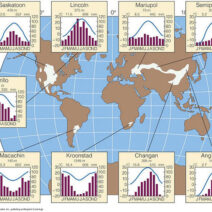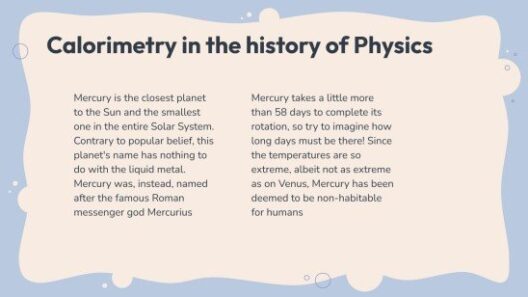Climate change is an ever-looming specter, a relentless specter that haunts the global landscape. For Mexico, a nation rich in biodiversity and cultural heritage, confronting this specter requires a multifaceted approach, blending policy innovation with grassroots mobilization. In essence, Mexico’s climate action resembles a vibrant tapestry, each thread representing a unique initiative that collectively strives to weave a more sustainable future.
At the heart of Mexico’s climate policy is the ambitious commitment to the Paris Agreement. This international accord symbolizes a global covenant—a pact forged in recognition that the Earth’s thresholds for temperature increase must not be crossed. Mexico has pledged to reduce greenhouse gas emissions by 22% by 2030, a bold undertaking that mirrors a phoenix rising from the ashes of past neglect towards environmental stewardship. This commitment underscores the seriousness with which the country regards its role in the global fight against climate change.
The National Climate Change Strategy (Estrategia Nacional de Cambio Climático) provides the framework through which these goals are pursued. This strategy manifests as a comprehensive plan encompassing various industries—from agriculture and energy to transportation and urban planning. It embodies the understanding that climate action is not a singular endeavor but an interdependent orchestration of various sectors working harmoniously towards a common objective.
Energy reform is conspicuously pivotal in this strategy, as Mexico strives to transition from fossil fuels to renewable energy sources, especially solar and wind power. With its geography providing bounteous sunlight and consistent winds, Mexico’s potential for renewable energy is a canvas yet to be fully painted. The government has initiated several projects that not only aim to diversify the energy portfolio but also to enhance energy efficiency across the nation. This gradual metamorphosis epitomizes the nation’s ambition not merely to keep up with global trends but to emerge as a leader in sustainable energy solutions.
However, the approach is not exclusively top-down. Mexico’s climate action is enriched by grassroots movements, showcasing the resilience of communities deeply affected by climate change. Local communities are becoming increasingly involved in climate adaptation initiatives—transforming their vulnerabilities into strengths. Community-led urban forestry projects, for instance, have turned blighted urban areas into lungs of the city, enhancing local biodiversity while also advocating for social equity. This bottom-up approach exemplifies a fertile ground where the seeds of change are sprout, cultivating a culture of environmental responsibility.
Yet, one must acknowledge the unique challenges that besiege Mexico. Vulnerable ecosystems, such as the coral reefs along the Yucatan Peninsula and the vast deserts of the north, face formidable threats from climate change. Coastal erosion, water scarcity, and biodiversity loss loiter around, ever persistent. The government, in recognition of these threats, initiated preservation programs targeting endangered species and crucial ecosystems. The establishment of protected areas reveals a growing acknowledgment that safeguarding natural habitats is less an expenditure and more an investment in humanity’s future stability.
Education plays a crucial role in Mexico’s climate action. Various campaigns aim to enlighten the populace about the dire realities of climate change and the steps necessary for mitigation. Schools have embraced environmental curricula, illustrating the importance of sustainability from a young age. When the new generation understands the stakes involved, they can become proactive agents of change. It is akin to planting seeds of awareness today that will eventually yield a bountiful harvest of informed individuals ready to tackle the climate crisis head-on.
Moreover, Mexico’s climate action is intertwined with socio-economic dimensions. The relationship between poverty and vulnerability to climate impacts is evident. Recognizing that many impoverished communities are disproportionately affected, strategies include social programs designed to uplift these populations while simultaneously addressing environmental degradation. Empowering local communities with both financial resources and knowledge creates a symbiotic relationship where social stability enhances climate resilience.
Nevertheless, challenges remain. The path forward faces political ramifications, financial constraints, and resistance from industries reliant on fossil fuels. Mexico’s pursuit of climate goals is comparable to navigating a turbulent sea; the current may push in unpredictable directions, yet with determination and collaboration, it can reach the desired shores. The need for coherent policies fostering public-private partnerships is paramount. Initiatives should include investment incentives for companies transitioning towards greener practices, creating an ecosystem of accountability and progress.
International collaboration also plays an instrumental role in Mexico’s climate strategy. By engaging in dialogues with neighboring countries and global organizations, Mexico seeks to learn from best practices while contributing its unique experiences and challenges. This interconnectedness highlights that while each country must spearhead its initiatives, a coordinated global response is essential for effective climate action. Each nation must understand that its local actions resonate on a global scale; treating climate change as both a local and a planetary concern is fundamental in navigating the intricacies of this crisis.
In conclusion, Mexico’s approach to grappling with global warming is a compelling narrative, an evolving saga in which every citizen, community, and institution plays a pivotal role. It is a dance between ambition and reality, between potential and execution. From ambitious policy frameworks and grassroots movements to educational courses guiding the next generation, this multifactorial strategy exemplifies an enduring commitment to environmental stewardship. As the tapestry of climate action unfurls, it invites not only reflection but active participation, nudging all within its borders—and beyond—towards a future where humanity and nature thrive in tandem. Indeed, Mexico’s climate narrative is one of resilience and ingenuity, sowing hope amid the existential threat posed by climate change.








